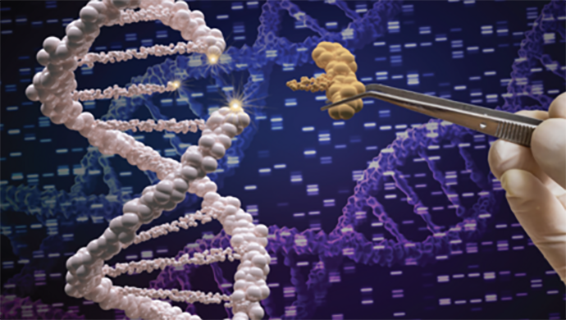Editor’s note: A version of this article originally appeared on the Frederick National Laboratory website.
Scientists at the Frederick National Laboratory for Cancer Research (FNL) and their National Cancer Institute colleagues have developed a method that enhances the capacity to identify interactions between proteins and molecules that are critical to drug targeting. The study, reported in Science Advances, includes libraries to aid other researchers.
A bedrock of drug discovery is identifying interactions between cell surface proteins (receptors) and molecules that bind to them (ligands) to deliver signals.
However, there are still many receptors for which there is no known binding partner, which limits the drug discovery progress. While high-throughput screening, a method to rapidly test a large drug library against a receptor, can identify these binding partners, it is complex and costly.
To address these challenges, scientists developed a highly efficient screening platform to identify previously unknown interactions between receptors and ligands. This screening platform uses CRISPR/Cas9 technology, a powerful, accurate and relatively simple method for manipulating genes at low cost and high efficiency. CRISPR/Cas9, which is derived from bacteria’s self-defense processes, has allowed genomic research to make leaps and bounds and is a preferred solution for researching mechanisms of tumor development and for researching and developing anticancer drugs and tumor treatments.
In this case, the scientists used a newer form of CRISPR/Cas9, called CRISPRa, to activate specific genes and thereby substantially increase the number of certain receptors on the cells’ surface. This made it easier to detect the receptors and their interactions.
“Many people know of using CRISPR/Cas9 in the context of editing DNA, be it gene knockout or inserting a specific piece of DNA in a precise location,” said Raj Chari, co-author of the study and director of the Genome Modification Core in the FNL’s Laboratory Animal Sciences Program. “In this approach, by harnessing Cas9’s ability to bind to DNA, we can target the CRISPR machinery to increase expression of a specific protein at the surface of the cell.”
Enhancing Assay Sensitivity
Still, the scientists wanted to bolster the method’s sensitivity to target matches with difficult-to-detect interactions, known as low-affinity receptor-ligand pairs. Such weak receptor-ligand binds are favorable in drug development because they can enable a drug to take effect faster and with fewer side effects.
To improve the detection of low-affinity interactions, scientists armed nano-sized magnetic beads with “bait” proteins, prompting the proteins to cluster, creating a strong “Velcro-like” connection between the protein receptor and potential ligand partner.
It worked. Scientists identified and characterized a previously unknown low-affinity protein-receptor pair—the ligand siglec-4 and receptor 4-1BB, also known as CD137, a protein expressed in both T cells and NK cells.
Baited Magnetic Beads Prove Invaluable
The use of the baited beads not only enhanced the screening sensitivity but enabled the evaluation of the speed of the reactions. Monitoring the interaction between the bait beads and screening molecules using flow cytometry, a laser-based technology generating a scattered and a fluorescent light signal that enables rapid analysis of the size and granularity of a particle or single cell, scientists could determine whether the screening campaign was successful. This potentially avoids the need for extensive deep genomic sequencing of the cells to confirm the presence of key pieces within the interaction, thus lowering costs.
“Because sequencing was the most expensive part of the original CRISPRa screening approach, avidity-based enrichment helps make CRISPRa more affordable,” said lead author Liping Yang, with the NCI’s Mouse Cancer Genetics Program.
Yang said advances in guide RNA (gRNA, which directs CRISPR/Cas9 to the target gene) can improve CRISPRa. A library of gRNA leverages the efficiency and specificity of the CRISPR gene-editing technology.
“For this, we created a library with a limited number of highly selective guides using more stringent criteria to minimize the number of ‘off-target’ hits and reduce sequencing costs,” Yang said.
New Libraries to Screen Human Receptor-Ligand Interactions
The two new gRNA libraries for public use are in the Addgene public database.
The FNL CRISPRa Cell Surface Library includes gRNAs targeting all known human cell surface proteins plus non-targeting controls. The combined FNL CRISPRa Cell Surface and Soluble Library includes all the Cell Surface Library gRNAs plus additional gRNAs targeting all known soluble factors.
These libraries can be used to identify uncharacterized receptor-ligand pairings by activating the expression of the receptor when using a ligand as bait and, thus, can increase the effectiveness and likelihood of discovering new therapeutic targets.
Mary Ellen Hackett is the communications manager at Frederick National Laboratory, where she leads the Public Affairs and Communications Office. PACO supports FNL through external communications and community relations, internal business communications, and creative multimedia services.


